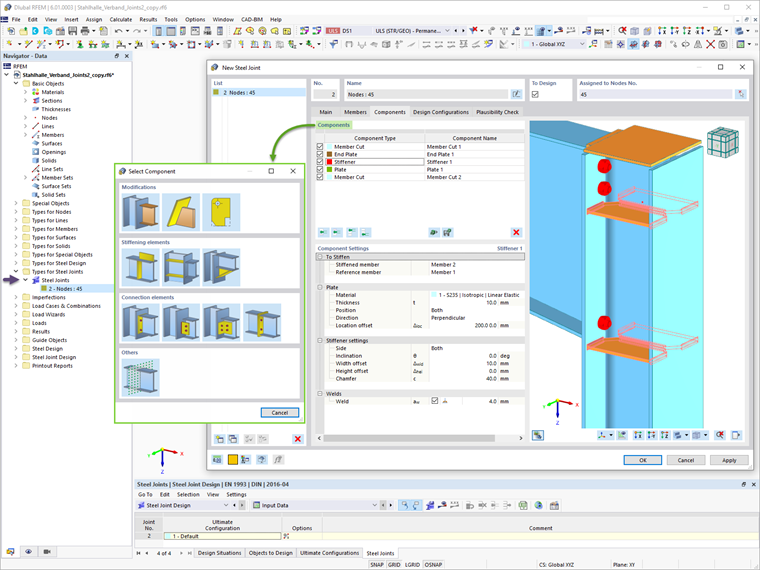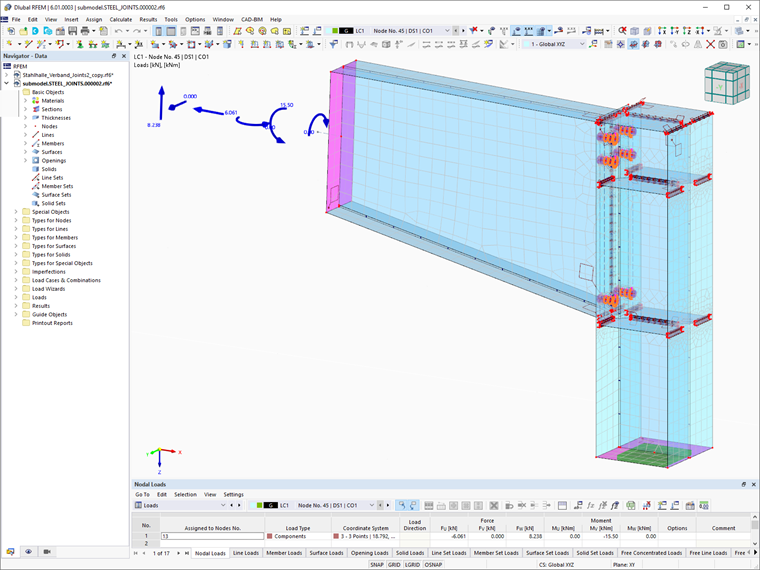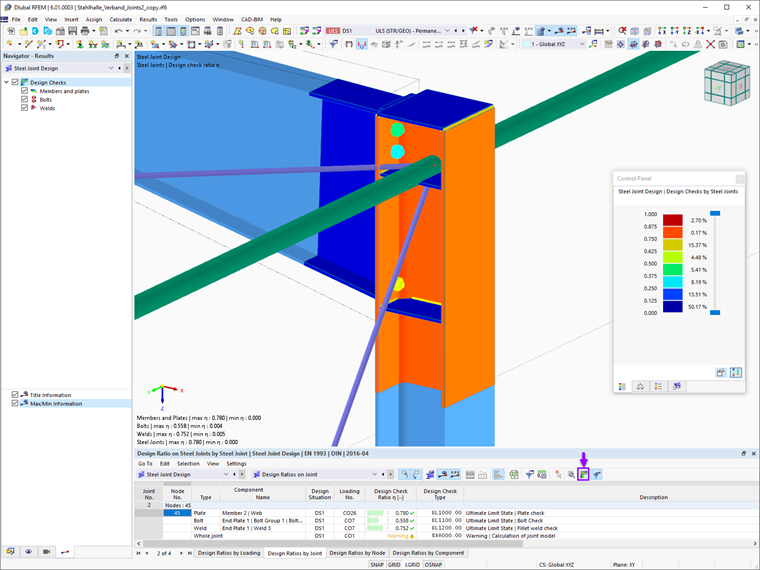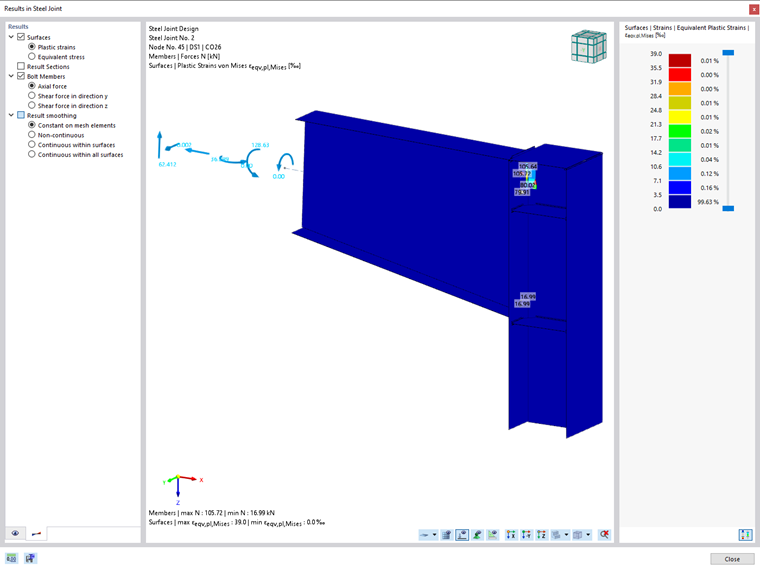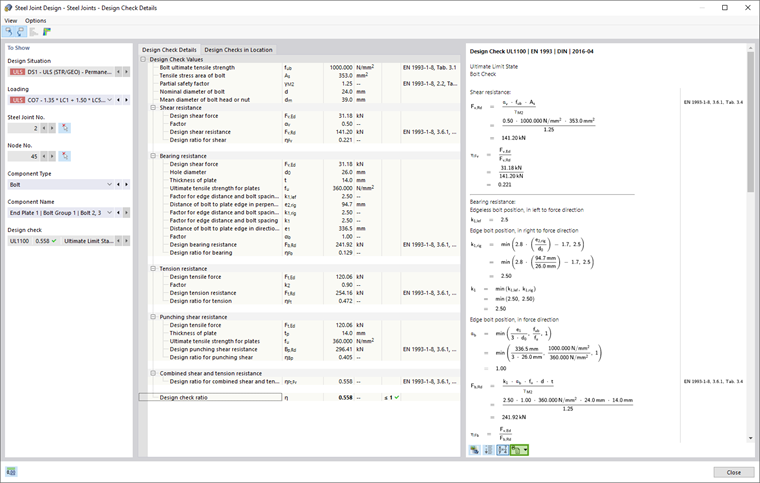Creating Steel Joints
Steel joints in RFEM 6 can be created by means of the simple and familiar input of predefined components. The initial data include the selection of nodes in the RFEM model, followed by the automatic recognition and assignment of the connecting members.
Several types of predefined components can be selected for typical connection situations (for example, end plate, cleats, fin plates). Universally applicable basic components (plates, welds, auxiliary planes) are also available for the input of complex connection situations.
The settings of the individual components can be defined and adjusted easily. In addition, modifications in terms of connecting members and plates can be introduced. The set of components defined in this manner can be saved as a template and stored in the user-defined library for further use.
At this point, the design parameters can be defined via the configuration settings. A plausibility check can also be carried out to examine the connection and detect missing data, plate collisions, incorrect welds, and so on.
Design of Steel Joints
The advantage of steel joint analysis in RFEM 6 is the automatic generation of an associated FE model in the background. An example of this model is provided in Image 2. This offers the possibility to design any connections with rolled and welded cross-sections. Those currently available are I-sections, U-sections, T-sections, and angles.
In this approach, the loading at the selected nodes is automatically transferred into the FE model and subsequently used for the design checks of the components according to EN 1993-1-8 (including National Annexes). Thus, the bolt forces as well as stresses required for the weld design are determined on the FE model, and the design of the bolt resistance and the welds is carried out according to the selected National Annex.
The plate design is performed plastically by comparing the existing plastic strain to the allowable plastic strain (5%, according to EN 1993-1-5, Annex C, or user-defined specifications).
Results
Once the design is accomplished, the governing design ratios are available in tabular and graphical form (as shown in Image 3). The results in the joint are accessible via the toolbar, and these results can be filtered separately according to the respective components (Image 4).
One of the new features in RFEM 6 is the output of design check details inclusive of the verification formulas used. The formulas provided can also be included in the printout report. An overview of the design check details in terms of steel joint design is shown in Image 5.
Final Remarks
In conclusion, the RFEM 6 Steel Joints add-on allows analysis of steel connections using an FE model. The input of different connection situations is possible by means of various components offered by the add-on. The FE model corresponding to the defined connection is automatically generated in the background. The transfer of the loading of all load combinations at the selected nodes is also automatic.
The loads determined on the FE model are subsequently used for the design checks of the components according to EN 1993-1-8 (including National Annexes). The add-on can be used for the design of any connection with the currently available rolled and welded cross sections such as I-sections, U-sections, T-sections, and angles.
In addition, there is no restriction on planar loading since all internal forces are considered in the design (N, Vy, Vz, My, Mz, and Mt).
Finally, a detailed insight into the results and the design checks is provided. Both the result tables and the design check details can be transferred to the RFEM printout report. The generated FE model can also be saved and used for further use and analysis.
